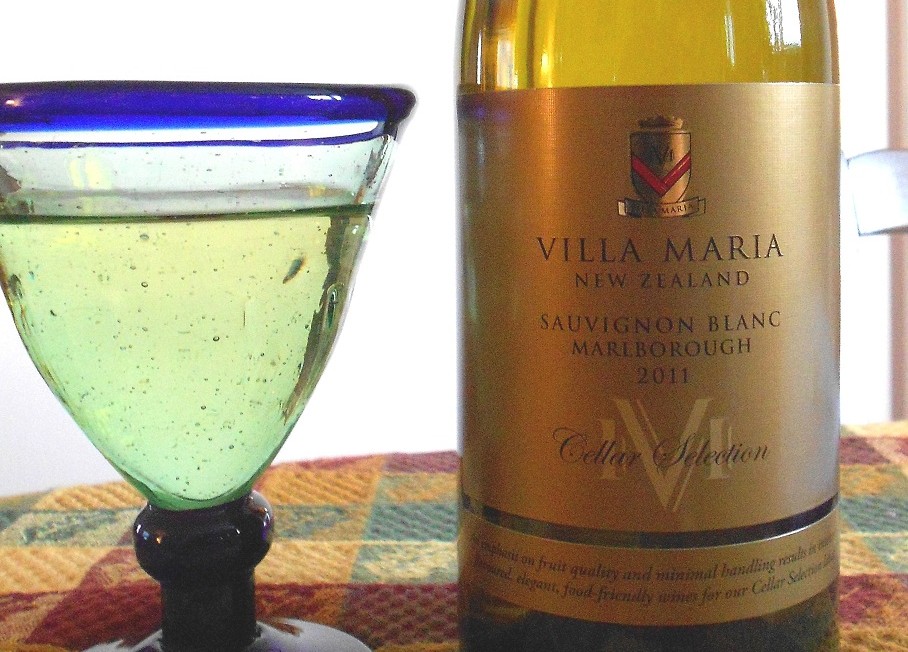If you want to understand modern wine, why we drink what we do, why sundry journals and writers laud or criticize some drinks, a good place to start is New Zealand sauvignon blanc.
About 20 years ago, NZ sauvignon blanc bounced on to the world stage, garnishing rave reviews and high scores. A big part of the reason was a herbaceous nose.
That bouquet, the smell of asparagus, was due to a pyrazine, isopropyl methoxy pyrazine, to be precise. It has a very low sensory threshold, between one and two nanograms per litre (ng/l). Note the range. Some people need twice as much before they can smell the stuff.
That same 20 years ago, the identifying bouquet of a great cabernet was the tell-tale smell of green bell peppers. This too is due to pyrazine. Cabernet sauvignon is a cross between sauvignon blanc and cabernet franc, so no surprise that some of the sauvignon blanc characteristics should be present.
But these days, the quickest way for a cab sauvignon to score under 80 is to have a “green” nose. Today, red wines are ultra-ripe picked at the last possible moment – pyrazines diminish as the grape ripens. But sauvignon blanc is often about the reverse.
To me, both extremes are way, way, way, overdone. I want a leaner red wine, and a slightly – ever so slightly – less grassy sauvignon blanc. Near as I can tell, the reason for the extremes is that any number of people, including wine reviewers apparently, have fairly high sensory thresholds. The bouquet for them has to be so strong that for others, it will be an outright assault on our senses.
So do I avoid New Zealand sauvignon blanc? No chance!
I am probably more sensitive to pyrazine than some, but I am in no way alone in this. There are a zillion other drinkers out there who agree with me, and lots of ëem live, work, and make wine in Marlborough, New Zealand’s premier sauvignon blanc growing region.
Take for example, Wild South a wine available in Saskatchewan, and a large grower in Marlborough. Brian Woods, the viticulturist for the company, complains vociferously about wines with too high a pyrazine content.
He showed me around the Marlborough for a couple of days, hauling me into wineries that he felt made ìundrinkableî wines; and into wineries he loved nearly as much as Wild South. Along the way he showed me the three main regions of Marlborough and why wines from each area are subtly different.
[related_content slugs=”in-praise-of-ripasso,carmenere-the-anti-pinot-noir,wines-for-cooling-cold-weather” description=”More wine, please” position=”right”]
There are about thirty or so white wines from New Zealand available in the province. (More on the reds soon.) The SLGA has 12, Cava Secreta another ten or so, and likewise Willow Park in Regina. In once sense they’re all alike – they all are sauvignon blanc after all – but there is also a fair bit of range amongst them, particularly in the bouquet.
Your job is to find the bouquet that suits you best. The pyrazine content varies from about five to 30 ng/l. Forget about what, I or Robert Parker like. Weíre not you. Your threshold for aromas, sugars, astringency and acidity will all be different from ours. (Parkerís thresholds are different than mine.)
As I prefer the medium/low end of the pyrazine spectrum these would be my favourites. But if you find these bland, by all means branch out. None of these wines are “bad” no matter how many faces I make at the glass you hand me.
Villa Maria Private Bin Sauvignon Blanc is a great juicy white thatís been around forever. They run a high science winery and spend at least some of their time watching the spectrometer for pyrazine. Always reliable, it’s a great drink. (In Manitoba and Alberta watch for the Cellar Selection, about $5 more, the gold label version pictured above.)
Kim Crawford walks a tightrope between keeping the bouquet apparent and restrained. Some years I think he falls off, but generally he stays upright.
Wild South is pretty close to a perfect Sauvignon blanc in my opinion, with great restraint and balance. This is my fave at the moment, followed by Villa Maria.
Finally, if you want to find out if you like a more aromatic nose, I’d suggest Yealands. They tend to a style that lets everyone figure out what is meant by the term herbaceous bouquet.
Wild South Sauvignon Blanc, Marlborough, New Zealand, 2009. $19 *****
Villa Maria Cellar Selection Sauvignon Blanc, Marlborough, New Zealand, 2009. $23 *****
Kim Crawford Sauvignon Blanc, Marlborough, New Zealand, 2009. $18 *****
Yealands Sauvignon Blanc, Marlborough, New Zealand, 2009. $17 ****
___
James Romanow writes about Wine and all things Boozy for the Spectator Tribune. Follow him @drbooze
Follow us: @SpectatorTrib
